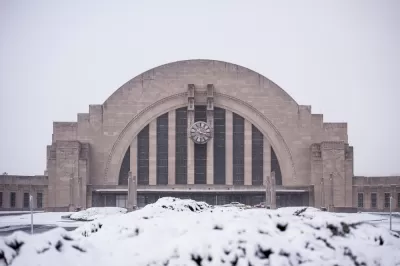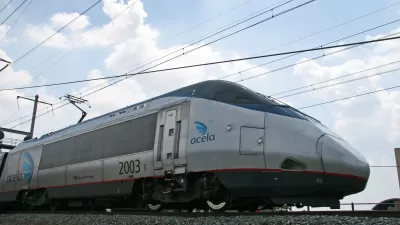The state has the chance to apply for a piece of $2.3 billion in federal funding to improve and expand Amtrak service.

With $2.3 billion in federal funding for passenger train service on the line, it remains unclear whether the state of Ohio will apply for a portion of the money. According to an article by Susan Glaser of Cleveland.com in Governing, Ohio Governor Mike DeWine “is awaiting answers to several key questions before making a decision about whether to seek federal money for expanded Amtrak service in the state.”
The governor wants to know how many new riders the service could get, the speed of the trains, how new passenger service would interact with existing freight service, and how much state funding would be required.
As Glaser explains, “This $2.3 billion is the first available for expanded intercity passenger rail service, part of a program to bring new routes to areas of the country that are underserved by train transportation.”
Ohio residents currently have limited access to intercity trains. Glaser notes, “There hasn’t been passenger rail service between Cleveland, Columbus and Cincinnati since the early 1970s.” This route was recently identified as a top priority by Amtrak. “Twelve years ago, under former Gov. Ted Strickland, the state received $400 million in federal funding to launch the 3-C route. Shortly after taking office, however, newly elected Gov. John Kasich famously returned the money to Washington because he was opposed to state support for passenger rail service.”
FULL STORY: With Amtrak Funds Now Available, Will Ohio Expand Rail Service?

Maui's Vacation Rental Debate Turns Ugly
Verbal attacks, misinformation campaigns and fistfights plague a high-stakes debate to convert thousands of vacation rentals into long-term housing.

Planetizen Federal Action Tracker
A weekly monitor of how Trump’s orders and actions are impacting planners and planning in America.

San Francisco Suspends Traffic Calming Amidst Record Deaths
Citing “a challenging fiscal landscape,” the city will cease the program on the heels of 42 traffic deaths, including 24 pedestrians.

Defunct Pittsburgh Power Plant to Become Residential Tower
A decommissioned steam heat plant will be redeveloped into almost 100 affordable housing units.

Trump Prompts Restructuring of Transportation Research Board in “Unprecedented Overreach”
The TRB has eliminated more than half of its committees including those focused on climate, equity, and cities.

Amtrak Rolls Out New Orleans to Alabama “Mardi Gras” Train
The new service will operate morning and evening departures between Mobile and New Orleans.
Urban Design for Planners 1: Software Tools
This six-course series explores essential urban design concepts using open source software and equips planners with the tools they need to participate fully in the urban design process.
Planning for Universal Design
Learn the tools for implementing Universal Design in planning regulations.
Heyer Gruel & Associates PA
JM Goldson LLC
Custer County Colorado
City of Camden Redevelopment Agency
City of Astoria
Transportation Research & Education Center (TREC) at Portland State University
Jefferson Parish Government
Camden Redevelopment Agency
City of Claremont





























